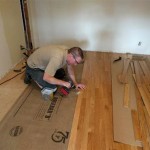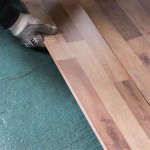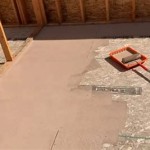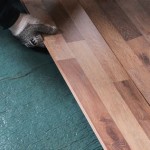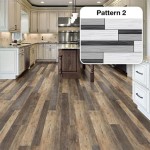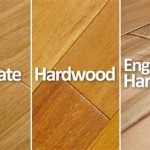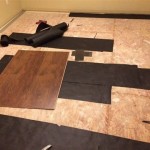How Much Does Replacing Hardwood Floors Cost?
Replacing hardwood floors represents a significant investment in a property, enhancing its aesthetic appeal and overall value. Understanding the various cost factors associated with this home improvement project is crucial for budgeting and making informed decisions. The final cost depends on various factors, including the type of wood, the square footage of the area, the complexity of the installation, and geographical location of the project.
The cost of replacing hardwood floors is not a fixed figure. It is a range influenced by several key elements. This article aims to provide a comprehensive overview of the different elements that contribute to the total expenditure, enabling homeowners to estimate the potential investment required for their specific hardwood flooring project.
Factors Influencing the Material Cost of Hardwood Flooring
The selection of hardwood material is a primary factor influencing the overall cost of replacement. Different types of wood possess varying characteristics, aesthetics, and price points. Understanding these differences is essential for aligning flooring choices with budget and desired outcome.
Solid hardwood flooring, known for its durability and longevity, typically costs more than engineered hardwood. Solid hardwood planks are milled from a single piece of wood, offering a rich, consistent appearance. However, its susceptibility to moisture fluctuations makes it less suitable for certain environments, such as basements or bathrooms. Common solid hardwood options include oak, maple, cherry, and walnut, each possessing unique grain patterns and hardness ratings. Oak, generally considered a mid-range option, is popular for its durability and versatility, while more exotic woods like Brazilian cherry or teak can significantly increase the material cost.
Engineered hardwood flooring, composed of a thin veneer of hardwood bonded to a core of plywood or high-density fiberboard (HDF), offers a more cost-effective alternative to solid hardwood. Its layered construction provides greater stability and resistance to moisture, making it suitable for a wider range of environments. While typically less expensive than solid hardwood, the cost of engineered hardwood can still vary depending on the thickness of the veneer and the quality of the core material. Higher-quality engineered hardwood flooring mimics the appearance of solid hardwood, but at a lower price point.
Beyond solid and engineered options, reclaimed hardwood is gaining popularity as a sustainable and aesthetically unique choice. Reclaimed wood, sourced from old barns, factories, or other structures, offers a distinctive character and history. However, the availability and processing of reclaimed wood can make it more expensive than new hardwood options. The cost associated with reclaimed wood often includes the process of cleaning, de-nailing, and re-milling the wood to ensure its suitability for flooring.
Additionally, the grade of the hardwood also impacts pricing. Higher grades have fewer knots and imperfections, leading to a cleaner, more uniform appearance, and therefore a higher cost compared to rustic grades with more character marks. When selecting a hardwood type, homeowners should consider durability, aesthetics, and environmental factors, as well as their budget.
Installation Costs and Associated Expenses
The labor cost of installing hardwood flooring is a significant component of the overall project expense. Installation complexity, room size, and existing floor conditions all influence the time and effort required for the installation process, subsequently affecting the total cost.
Professional installation is generally recommended to ensure a proper and lasting result. Hiring experienced flooring installers minimizes the risk of errors, such as gapping, uneven surfaces, or improper subfloor preparation. Labor costs are typically calculated per square foot, with rates varying based on the installer's experience, the complexity of the installation, and geographical location. Simple installations in square or rectangular rooms will generally cost less than installations involving intricate patterns or challenging room layouts.
Subfloor preparation is a crucial step in hardwood flooring installation. An uneven or damaged subfloor can compromise the integrity and lifespan of the new flooring. Depending on the subfloor's condition, additional work may be required, such as leveling, repairing damaged areas, or installing a new subfloor altogether. These additional preparations will increase the overall cost of the project.
The removal and disposal of existing flooring also contribute to the overall cost. Existing flooring materials, such as carpet, tile, or old hardwood, must be removed and disposed of properly before the new hardwood flooring can be installed. Disposal fees may apply, depending on local regulations and the volume of removed materials.
Furthermore, the cost of moldings and trim must be factored into the overall budget. Baseboards, quarter-round, and transitions are essential for finishing the installation and creating a polished look. The type and quantity of moldings and trim required will depend on the room's dimensions and the architectural style of the property. Pre-finished moldings and trim typically cost more than unfinished options, but they save time and effort during installation.
Other installation-related costs may include the purchase of adhesives, underlayment, and other materials necessary for proper installation. Underlayment provides a moisture barrier and sound insulation, enhancing the comfort and performance of the hardwood flooring. The cost of these materials will depend on the quality and type of product chosen.
Geographical Location and Market Factors
The cost of replacing hardwood floors can vary significantly depending on the geographical location. Labor rates, material costs, and local market conditions all contribute to these regional differences. Areas with higher cost of living typically experience higher labor costs for flooring installation. Metropolitan areas tend to be more expensive than rural areas.
Material availability and transportation costs also influence price variations. Regions with abundant local hardwood resources may have lower material costs compared to areas that rely on imported materials. Transportation costs can add to the overall expense, particularly for exotic or specialty wood species.
Seasonal demand can also impact pricing. Flooring contractors may offer discounts during slower periods of the year, such as the winter months, to maintain a steady flow of work. Conversely, during peak seasons, such as spring and summer, demand for flooring services increases, potentially leading to higher prices.
Local building codes and regulations may also affect the cost. Certain municipalities may require permits for flooring installations, adding to the overall project expense. Compliance with local building codes ensures that the installation meets safety and quality standards.
Market competition among flooring contractors can also influence pricing. Obtaining multiple quotes from different contractors is recommended to ensure a competitive price. Comparing quotes allows homeowners to assess the value offered by different contractors and make informed decisions based on their budget and requirements.
Economic conditions, such as inflation and supply chain disruptions, can also affect the cost of hardwood flooring. Fluctuations in the price of raw materials and increased transportation costs can lead to higher prices for both materials and labor. Staying informed about current market trends helps homeowners anticipate potential cost increases and plan their flooring projects accordingly.
In summary, the cost of replacing hardwood floors is a multifaceted consideration requiring careful planning and budgeting. Material selection, installation complexity, and geographical location all play significant roles in determining the overall expense. By understanding these factors, homeowners can make informed decisions and achieve a beautiful and durable hardwood flooring solution that aligns with their budget and expectations. Thorough research, obtaining multiple quotes, and working with qualified professionals are essential steps in ensuring a successful and cost-effective hardwood flooring replacement project.
When evaluating the cost of replacing hardwood floors, it is also essential to consider the long-term value and benefits that hardwood flooring provides. Hardwood floors can increase a property's resale value, enhance its aesthetic appeal, and provide a durable and low-maintenance flooring solution for years to come. While the initial investment may be higher than other flooring options, the long-term benefits often outweigh the costs.
Furthermore, consider the potential for DIY installation. While professional installation is generally recommended for complex projects or inexperienced homeowners, some individuals may choose to install hardwood flooring themselves to save on labor costs. However, DIY installation requires careful planning, proper tools, and a thorough understanding of installation techniques. Mistakes during DIY installation can lead to costly repairs or the need to hire a professional to correct the errors.
Ultimately, the decision to replace hardwood floors is a significant investment that should be approached with careful consideration and planning. By understanding the various cost factors involved and making informed decisions, homeowners can achieve a beautiful and durable hardwood flooring solution that enhances their property's value and provides years of enjoyment.

Cost To Remove Hardwood Floors Mk Remodeling

Floor Replacement Cost To Refloor A House Fixr

Floor Replacement Cost To Refloor A House Fixr

Cost To Install Hardwood Flooring Floor Fixr

How Much Does Flooring Installation Cost 2025

Hardwood Flooring Cost 2024 Per Square Foot Mk

How Much Does Flooring Installation Cost 2025

How Much Does Flooring Installation Cost 2025

Cost Of Installing Hardwood Floors Top 2024 Guide

Hardwood Flooring Installation Costs 2024
See Also
